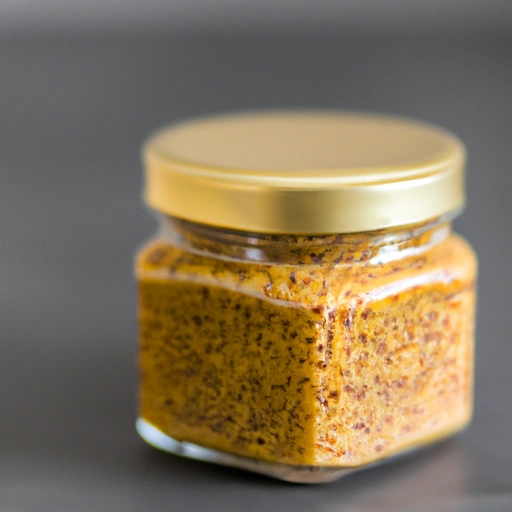Whole Grain Mustard
Description

Whole grain mustard, also known as 'grainy mustard', is a condiment made from partially crushed mustard seeds. It is characterized by its distinct texture and robust flavor, which can range from mild to spicy, depending on the variety of mustard seed and preparation method used. Unlike smooth mustards, whole grain mustard retains the seeds' shape, providing a rustic and gourmet appeal to dishes. It is a versatile ingredient widely utilized in both American and European cuisine and can be measured in various units, including teaspoons (tsp), tablespoons (tbsp), ounces (oz), and grams (g), to suit recipes from around the globe.
Common uses
Whole grain mustard is commonly used as a spread for sandwiches, a base for salad dressings and vinaigrettes, a glaze for meats, and an ingredient in marinades and sauces. Its tangy and piquant flavor enhances the taste of various dishes without overpowering other ingredients.
Nutritional value
Calories
Typically, a 1 tablespoon (approx. 15 ml or 15g) serving of whole grain mustard contains about 10-15 calories.
Protein
Whole grain mustard contains a small amount of protein, roughly 0.5 grams per tablespoon.
Fat
This condiment is low in fat, with less than 0.5 grams per tablespoon.
Carbohydrates
Carbohydrates in whole grain mustard are minimal, generally around 1 to 2 grams per tablespoon.
Vitamins
While not a significant source of vitamins, whole grain mustard may contain trace amounts of Vitamin C and some B vitamins.
Minerals
It also provides a modest amount of minerals such as selenium, magnesium, and phosphorus.
Health benefits
Whole grain mustard is known for its potential health benefits, including being low in calories and a source of antioxidants, which can help reduce inflammation and support heart health. The presence of mustard seeds means it also contains compounds that may have digestive and metabolism-boosting properties.
Potential risks
For individuals with certain allergies or on sodium-restricted diets, caution should be exercised as some whole grain mustards may contain allergens or high levels of sodium.
Common recipes
Whole grain mustard is an ingredient in recipes such as mustard-crusted roast meats, potato salads, dips, and gourmet sandwiches.
Cooking methods
It is often used at room temperature as a condiment or added near the end of the cooking process to maintain its robust flavor.
Pairing with other ingredients
Whole grain mustard pairs well with meats like beef, pork, and poultry, as well as with cheeses, greens, and artisan breads.
Summary
Whole grain mustard is a flavorful and textured condiment with a rich history and diverse culinary applications. It offers nutritional value while contributing zest and depth to a range of dishes. When used mindfully, it can be a healthy addition to one's diet, though some individuals may need to use it sparingly. Its adaptability in recipes and compatibility with various cooking methods makes it a cherished ingredient in kitchens worldwide.